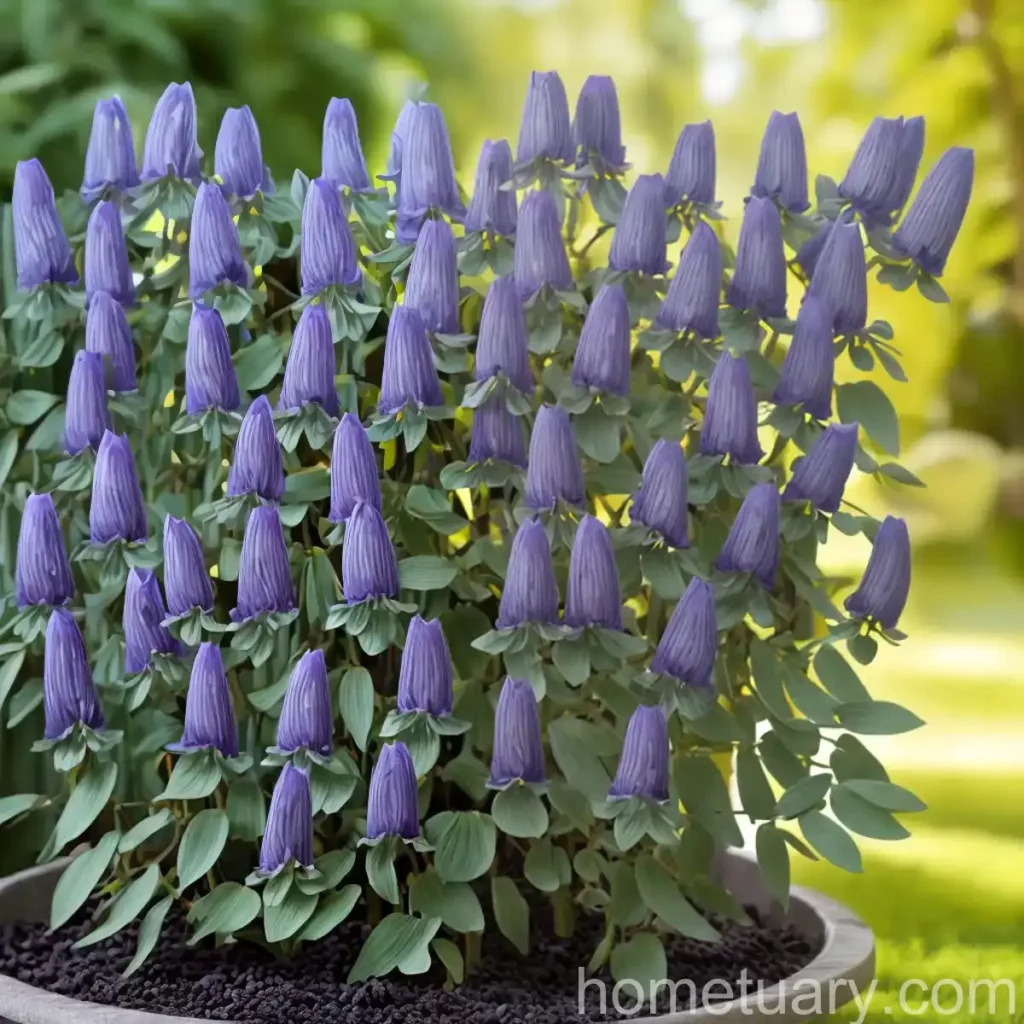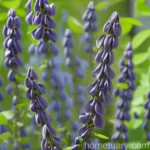False Indigo (Baptisia alba – Pendula Group): A Complete Guide
False indigo (Baptisia alba – Pendula Group) is a stunning perennial plant that belongs to the indigo plant family. It is known for its beautiful white flowers and attractive foliage, making it a popular choice for gardeners and landscapers. In this comprehensive guide, we will explore everything there is to know about false indigo, including its culture, uses, care requirements, common diseases, pests, propagation techniques, and much more.
What is False Indigo (Baptisia alba – Pendula Group)?
False indigo, scientifically known as Baptisia alba – Pendula Group, is a native flowering plant that is prized for its showy white flowers and ornamental foliage. It is a member of the indigo plant family and is classified as a perennial herbaceous plant, meaning it regrows each year from its rootstock.
This plant is recognized for its drought-tolerant nature and ability to thrive in a variety of conditions. Its graceful arching stems and fragrant flowers make it a standout addition to any garden or landscape. False indigo is often used in wildflower gardens, native plant landscapes, and cottage garden settings due to its low maintenance and aesthetic appeal.
Key Takeaways – False Indigo (Baptisia alba – Pendula Group)
Before we delve into specific details about false indigo, let’s highlight some key takeaways about this remarkable plant:
- False indigo, or Baptisia alba – Pendula Group, is a native flowering plant known for its attractive white flowers and ornamental foliage.
- It is classified as a perennial herbaceous plant and belongs to the indigo plant family.
- False indigo is a drought-tolerant species that thrives in various conditions, making it a versatile choice for gardeners and landscapers.
- This plant is an excellent choice for spring blooming, as it produces long-lasting blooms that attract pollinators such as butterflies.
- It is a low maintenance plant and is resistant to deer, making it an attractive option for sustainable and organic gardening practices.
- False indigo can be used in landscaping, cottage gardens, and even as a nectar source for butterflies, showcasing its versatility and ecological significance.
Now, let’s explore the various aspects of false indigo, including its culture, care requirements, uses, and more.
Culture
Understanding the cultural requirements of false indigo is essential for successfully growing and maintaining this beautiful plant. Whether you plan to incorporate it into your garden, landscape, or container, knowing the cultural needs of false indigo is key to ensuring its health and vibrancy.
Uses
Landscape and Garden Uses
False indigo (Baptisia alba – Pendula Group) is a versatile plant that can be used in a variety of landscape and garden settings. Some common uses include:
- Wildflower gardens: False indigo adds a natural and untamed beauty to wildflower gardens, attracting pollinators and enhancing biodiversity.
- Native plant landscapes: As a native species, false indigo is often used in landscaping to create natural and sustainable environments that support local ecosystems.
- Cottage gardens: The charming and long-lasting blooms of false indigo make it a popular choice for cottage gardens, where it can complement a variety of other flowering plants.
- Butterfly gardens: Its nectar-rich flowers make false indigo a valuable addition to butterfly gardens, providing a food source for these beautiful insects.
Ornamental Uses
In addition to its ecological uses, false indigo is also valued for its ornamental qualities. It serves as an attractive landscape feature, especially when used for:
- Borders and edging: The graceful form and attractive flowers of false indigo make it an ideal choice for border plantings, defining garden beds and pathways.
- Focal points: As a tall and showy plant, false indigo can be used as a focal point in garden designs, drawing attention with its impressive stature and floral display.
- Container gardening: False indigo can be grown in containers, adding a touch of elegance to outdoor spaces such as patios, balconies, and courtyard gardens.
Water
False indigo is known for its drought-tolerant nature, making it well-suited for gardens and landscapes where water conservation is a priority. However, it is important to provide adequate irrigation, especially during the plant’s establishment phase and periods of prolonged dryness.
- Establishment: When first planted, false indigo should be watered regularly to help it establish a strong root system. Once established, it can tolerate some level of drought.
- Prolonged dry spells: During extended periods of drought, providing supplementary water can help maintain the plant’s vigor and prevent stress.
Sunlight
As a sun-loving plant, false indigo thrives in full sun to partial shade. Providing the right amount of sunlight is crucial for promoting healthy growth and abundant flowering.
- Full sun: False indigo performs best when grown in a location that receives at least 6-8 hours of direct sunlight per day.
- Partial shade: While it prefers full sun, false indigo can tolerate some degree of shade, especially in hot climates or during the intense afternoon sun.
Fertilizer
False indigo generally does not require heavy fertilization, especially if grown in nutrient-rich soil. However, providing a balanced fertilizer can support its growth and flowering.
- Timing: Fertilize false indigo in early spring, just as new growth begins to emerge.
- Type: Use a well-balanced, slow-release fertilizer to provide essential nutrients without causing excessive vegetative growth.
Soil
Understanding the soil requirements of false indigo is crucial for creating an optimal growing environment. This plant thrives in well-drained soils with good fertility and a slightly alkaline pH.
- Well-drained soil: False indigo prefers soil that allows excess water to drain away, preventing waterlogged conditions that can lead to root rot.
- Fertility: While not overly demanding, false indigo benefits from soil with moderate fertility, supplemented with organic matter for improved soil structure.
- pH: A slightly alkaline soil pH in the range of 6.5 to 7.5 is ideal for promoting healthy growth and flowering.
Pruning
Proper pruning is essential for maintaining the health and appearance of false indigo. Although it is a low-maintenance plant, periodic pruning helps manage its size, shape, and overall vigor.
- Deadheading: Removing spent flowers after blooming can encourage additional flowering and prevent the plant from expending energy on seed production.
- Spring cleanup: In early spring, prune back any winter-damaged or dead stems to promote new growth and maintain a tidy appearance.
- Division: Every 3-4 years, consider dividing mature false indigo plants to rejuvenate them and prevent overcrowding.
Propagation
Propagating false indigo allows you to expand your plant collection or share this beautiful species with fellow gardeners. Several methods can be used to propagate false indigo successfully.
- Division: The most common propagation method for false indigo is division. Established plants can be carefully divided in early spring, with each division containing healthy roots and shoots for replanting.
- Seed propagation: False indigo can also be grown from seeds, although this method requires patience as the seeds may take some time to germinate and reach maturity.
Container Popularity
False indigo is increasingly popular for container gardening, thanks to its graceful form, attractive foliage, and long-lasting blooms. When grown in containers, it can be used to create stunning focal points on patios, decks, and other outdoor spaces.
Container Common Diseases
While false indigo is generally resilient and disease-resistant, certain conditions and environmental stressors can make it susceptible to common plant diseases, including:
- Powdery mildew: High humidity and poor air circulation can lead to powdery mildew, a fungal disease that causes a white powdery coating on the leaves.
- Leaf spot: Fungal leaf spot diseases can occur in excessively wet conditions, causing dark spots and discoloration on the foliage.
Disease Diagnosis
Diagnosing potential diseases in false indigo involves closely observing the plant’s symptoms and making a timely and accurate assessment. Common signs of disease include:
- Abnormal discoloration or spots on the leaves
- Unusual powdery or fuzzy growth on the foliage
- Overall decline in plant vigor and health
Common Pests
While false indigo is generally resistant to pest infestations, certain insects may occasional cause problems for this plant.
- Aphids: These small, sap-sucking insects can cluster on new growth and cause deformation and discoloration of the foliage.
- Leafhoppers: Leafhoppers may feed on the sap of false indigo, leading to yellowing and curling of the leaves.
Botanist’s Tips
For those who have a deep love for plants and nature, here are some botanist’s tips to help you grow and appreciate false indigo:
- Native plant conservation: Supporting native plant species such as false indigo helps conserve natural biodiversity and provides essential habitats for local wildlife.
- Pollinator-friendly gardening: Incorporating false indigo into your garden encourages pollinators, including butterflies and bees, supporting essential ecosystem services.
- Sustainable landscaping: Growing drought-tolerant plants like false indigo promotes water conservation and reduces the environmental impact of traditional landscaping practices.
Fun Facts
Discover some intriguing and lesser-known facts about Baptisia alba – Pendula Group:
- Medicinal uses: Historically, parts of the false indigo plant were used in traditional medicine for various purposes, including as an herbal remedy.
- Deer-resistant: False indigo is renowned for its resistance to deer browsing, making it a valuable addition to gardens in areas with deer populations.
- Historical significance: The genus name “Baptisia” is derived from the Greek word “bapto,” meaning to dye, alluding to the traditional use of the plant as a natural dye.
Links to External Resources
Explore more about false indigo and its horticultural significance by visiting the following resources:
- The United States Department of Agriculture (USDA) Plants Database
- The North Carolina State University Extension: Growing Baptisia (False Indigo)
- The Lady Bird Johnson Wildflower Center: Baptisia alba
Conclusion
False indigo (Baptisia alba – Pendula Group) stands out as a remarkable plant with its striking white flowers, ornamental foliage, and ecological significance. Whether used in garden borders, wildflower landscapes, or container gardens, this versatile and low-maintenance plant adds beauty and value to any setting. By understanding its cultural needs, uses, care requirements, and ecological importance, we can appreciate and celebrate the magnificence of false indigo in the natural world.















